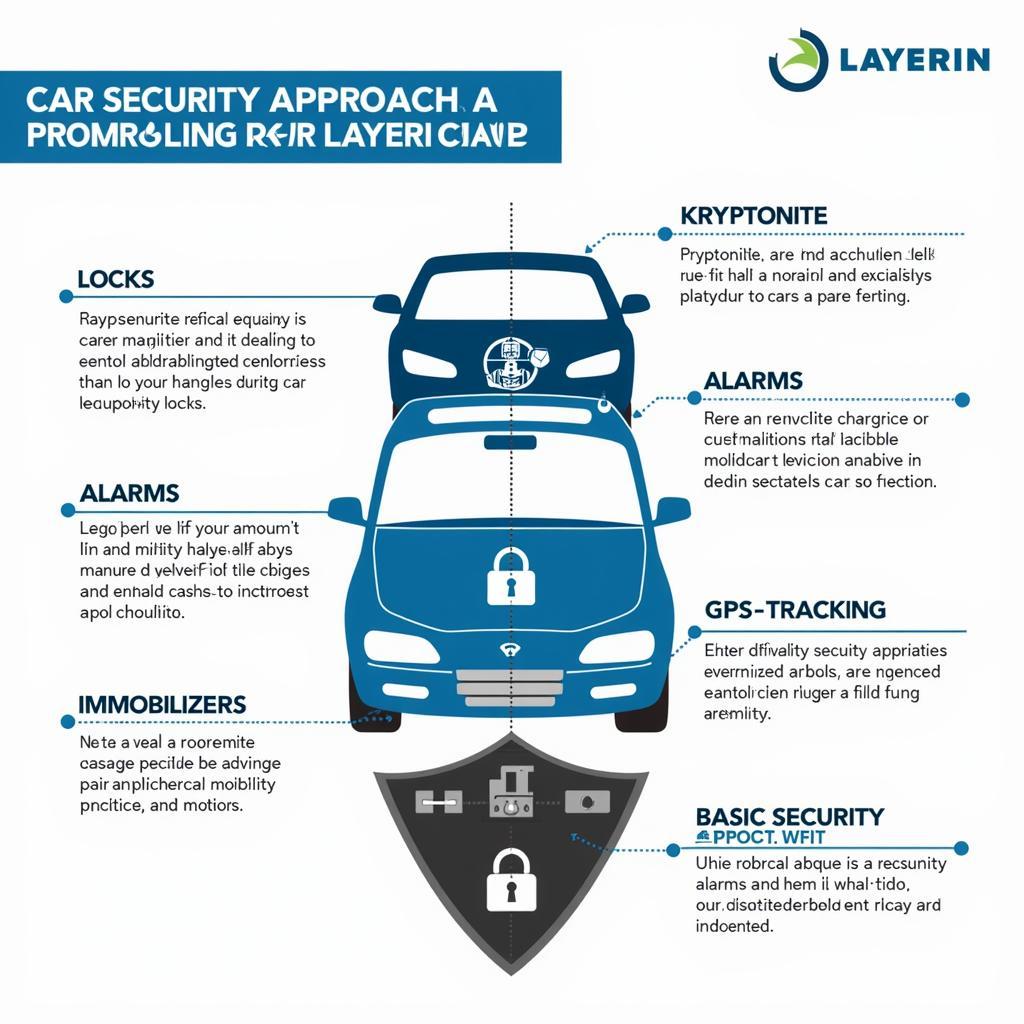The modern car key fob, a seemingly simple device we often take for granted, is actually a marvel of miniaturized technology. But how does a key fob work its magic, allowing us to lock and unlock our cars remotely? Let’s delve into the fascinating world of radio waves, rolling codes, and vehicle immobilizers to understand the inner workings of this essential car accessory.
The Science of Wireless Communication: Sending Signals Through the Air
At the heart of every key fob lies a radio transmitter, a tiny electronic component capable of sending out radio waves. When you press a button on your key fob, it transmits a specific radio frequency signal to your car’s receiver, typically located near the vehicle’s antenna. This communication is similar to how a remote control interacts with your television.
The Language of Security: Understanding Rolling Codes and Key Fob Programming
To ensure security and prevent unauthorized access, modern key fobs employ a clever system called rolling codes or hopping codes. Instead of transmitting the same signal every time, the key fob generates a unique, encrypted code for each use. This code changes according to a pre-programmed algorithm, shared between your key fob and the car’s receiver during the key fob programming process.
When you press a button on your key fob, it transmits both the unique code and the rolling code. The receiver in your car verifies the rolling code against its internal database. If the code matches, the car unlocks, recognizing your key fob as authorized. This system makes it incredibly difficult for thieves to intercept and replicate your key fob signal for their nefarious purposes.
More Than Just Locking and Unlocking: Exploring the Multifaceted Functions of a Key Fob
While we primarily associate key fobs with locking and unlocking our cars, they often offer a suite of additional functions for added convenience and security.
-
Remote Start: Imagine starting your car and warming it up on a chilly winter morning without leaving the comfort of your home. Many modern key fobs offer remote start functionality, allowing you to start the engine remotely.
-
Panic Button: In emergency situations, a key fob’s panic button can be a lifesaver. When activated, it triggers the car’s alarm system, drawing attention and potentially deterring attackers.
-
Trunk Release: No more fumbling with keys to open the trunk. Key fobs often include a dedicated button for remotely releasing the trunk latch, making loading and unloading groceries a breeze.
-
Memory Settings: For vehicles shared by multiple drivers, some key fobs store personalized settings, like seat positions, mirror adjustments, and radio presets. These preferences are automatically applied when you unlock the car with your assigned key fob.
Key Fob Battery Replacement: Keeping Your Remote in Tip-Top Shape
Like any electronic device, your key fob relies on a battery to power its functions. Over time, this battery will inevitably drain and require replacement. Fortunately, changing a key fob battery is a relatively simple DIY task that can often be done at home with a few common tools.
For specific instructions on replacing the battery in your car’s key fob, you can refer to resources tailored to your vehicle’s make and model. For instance, we have detailed guides available for popular models like the 2017 Ram 1500 key fob and the 2015 Toyota RAV4 key fob battery.
Troubleshooting Key Fob Issues: When Your Remote Needs a Helping Hand
Despite their robust design, key fobs can occasionally encounter issues that prevent them from functioning correctly. Here are some common problems and potential solutions:
-
Key Fob Not Working at All: If your key fob is completely unresponsive, the most likely culprit is a dead battery. Try replacing the battery and see if that resolves the issue. If the problem persists, there might be a problem with the key fob itself or the car’s receiver.
-
Intermittent Key Fob Range: If you find yourself standing uncomfortably close to your car to get the key fob to work, the battery might be low and need replacement. Other factors that can affect range include interference from other electronic devices, physical obstructions, or a weak signal from the key fob transmitter.
-
Key Fob Programming Errors: Sometimes, the pairing between your key fob and the car’s receiver can be disrupted, leading to communication errors. This situation might require reprogramming the key fob to re-establish the connection. Procedures for reprogramming vary depending on the vehicle make and model, and you might need to consult your owner’s manual or seek assistance from a qualified automotive locksmith or dealership.
“Key fob issues can often be diagnosed and resolved remotely using specialized software and diagnostic equipment,” says Sarah Thompson, a senior automotive diagnostics technician at CARDIAGTECH. “By connecting to the vehicle’s onboard computer system, we can analyze error codes, test key fob signals, and even program new key fobs wirelessly, providing efficient and convenient solutions for our customers.”
The Future of Keyless Entry: Exploring Emerging Technologies and Innovations
The realm of car key fobs is continuously evolving, driven by advancements in technology and a growing demand for enhanced security and convenience. Let’s glimpse into the future of keyless entry:
-
Smartphone-Based Keyless Entry: Imagine leaving your traditional key fob at home and using your smartphone as your car key. This concept is already a reality with several car manufacturers offering smartphone app-based systems that allow you to lock, unlock, start, and even share virtual keys with others.
-
Biometric Authentication: Incorporating fingerprint or facial recognition technology into keyless entry systems adds an extra layer of security, ensuring that only authorized individuals can access the vehicle.
-
Ultra-Wideband (UWB) Technology: UWB technology offers precise location tracking, enabling features like hands-free locking and unlocking. As you approach your car with your UWB-enabled device, it will automatically unlock, and as you walk away, it will lock securely behind you.
Conclusion: The Indispensable Role of Key Fobs in Our Modern Automotive Landscape
From their humble beginnings as simple remote locking devices, key fobs have transformed into sophisticated systems that seamlessly blend convenience, security, and advanced technological features. As we embrace the future of mobility, key fobs will continue to adapt, incorporating new innovations to enhance our driving experience and ensure our vehicles remain secure and accessible.
Whether you drive a sleek sports car or a rugged SUV, understanding how a key fob works empowers you to appreciate the ingenuity behind this everyday device and effectively troubleshoot any issues that might arise. And if you’re in the market for a new car, exploring the latest keyless entry technologies can significantly enhance your driving comfort and peace of mind.


